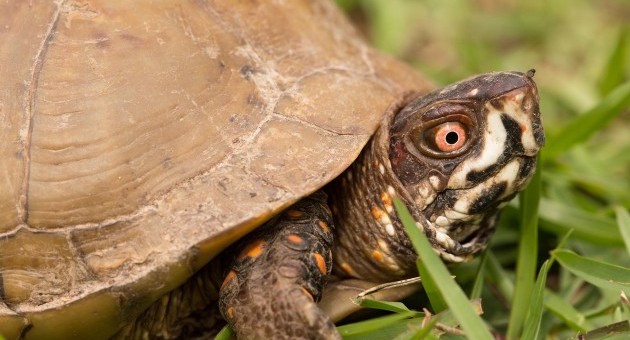The November 2002 CITES conference in Santiago, Chile, brought victory to supporters of limited sales of ivory in several African nations but declined to lift restrictions on hunting some whale species.
CITES, the Convention on International Trade in Endangered Species, governs the sale of animals listed as endangered or threatened. Signers of the treaty meet every few years to discuss adding or subtracting species from oversight.
In 1997, CITES members gave Zimbabwe, Zambia, and Botswana the right to sell portions of their stockpiles to Japan in a tightly controlled one-time sale. These three nations, South Africa, and Namibia returned to the conference this year with requests for additional sales. Each country has a stockpile of ivory gathered from dead animals and from legal killing, and each asked for permission to sell portions of these stockpiles, allow tourists to buy carved ivory trinkets and take them back home, expand trade in hides and leather goods, and increase trade in hunting trophies. All money for the sale of ivory was earmarked for elephant conservation and enforcement of anti-poaching laws, and trade in hides, leather goods, and art items and expenditures of hunting parties would also help raise the standard of living in poor villages.
Ivory sales have been banned since 1989 in an attempt to decrease poaching of elephants for their tusks. Since that time, populations of elephants have exploded in several southern African nations, and the animals are destroying their own habitat and damaging crops, flattening homes, and even killing people in the countryside. In addition to dealing with this destruction, governments have collected a stockpile of ivory from poachers and from animals that were legally killed or died naturally.
Shortly after this year’s vote, the Boston Globe reported that South Africa’s Kruger National Park has a population of more than 10,000 elephants on land that can support about 7000 of the great beasts. Furthermore, the Globe reported, the herd is increasing by 700 births per year, a population growth that has triggered discussion of controlled culls to protect the diversity of the environment in the park.
Dr. Ian Whyte, senior scientist for large herbivores at Kruger, told the Globe that elephants have no natural enemies other than man, are not affected by recurring drought, and can turn woodlands into grasslands in short order because they eat for 18 hours a day. These factors leave only three methods to reduce herd size, Whyte said: moving the animals to a neighboring country, trying an “iffy” contraception program, and killing selected animals.
Whales
While trade in ivory has gained some acceptance as habitat destruction by elephants has become obvious and as plans for using the money to protect elephants and their environment and enhance the economic status of poor villagers have been developed, CITES members have shown increasing willingness to modify the ivory ban and allow some hunting. However, most nations are still reluctant to lift bans on hunting whales, even when populations have recovered and trade in whale meat and blubber can benefit fishermen in coastal areas.
As in the past, therefore, CITES denied Japan’s request to hunt a limited number of two whale species in spite of the plan’s adherence to strict controls.
Whale hunting is prohibited by the International Whaling Commission, a body of nations that also meets every few years to assess whale populations The IWC allows hunting only for scientific purposes and by a limited number of native people in coastal areas. Japan has sparked controversy for its hunting of minke and Bryde’s whales for scientific purposes and selling the meat in their own country. Norway also hunts minke whales for internal consumption and has received international scorn for doing so.
Eugene LaPointe, former secretary-general of CITES, said the members made a mistake in voting against the Japanese proposals.
“If CITES becomes a one-way mechanism for systematically restricting and prohibiting trade in wildlife, it will begin to lose its effectiveness,” LaPointe said. “There needs to be a return ticket for those species that have recovered, allowing them to be traded again in a carefully controlled manner. Otherwise, nations will instinctively resist CITES measures in the future and many species that could have been protected will face serious problems.”
LaPointe is now president of the International Wildlife Management Consortium World Conservation Trust. He attended the CITES conference as an official observer.
“The recovery of whale stocks is a success story, but if we continue to prevent all commercial whaling without good reason, we risk going back to square one and losing the entire international framework for managing whales” he added. “After all, what is the point of a framework that only stops activity?”
Bans on ivory, elephant hunting, and whale hunting have been heavily supported by animal rights organizations. Although these groups cannot vote at CITES or IWC meetings, they lobby various government delegations to vote against changes that allow hunting, and they use these issues in international fund-raising schemes.
 |
Like this article? Don’t forget to share, like or follow us |
 |
NAIA WEEKLY ROUNDUP
FEATURED & LATEST ARTICLES
GET THE NAIA WEEKLY ROUNDUP VIA EMAIL FOR FREE
Stay Connected with The NAIA: Sign Up for The Weekly Roundup
Join our FREE newsletter and community of animal advocates and receive The NAIA Weekly Roundup straight to your inbox. Stay in the loop with the latest news, events, and ways you can make a difference in the lives of animals. Sign up now to stay informed to create positive change!
Sign Up




 A Question of Neglect, A Legendary Primatologist Passes Away, and More!
A Question of Neglect, A Legendary Primatologist Passes Away, and More!
 Shelter Spay Pushback, A Contentious Ostrich Cull, and More!
Shelter Spay Pushback, A Contentious Ostrich Cull, and More!
 Bad Dog Stories, Goodbye Cephalopod, and More!
Bad Dog Stories, Goodbye Cephalopod, and More!
 A Conference Call for You, A Fallen Elephant, and More!
A Conference Call for You, A Fallen Elephant, and More!


